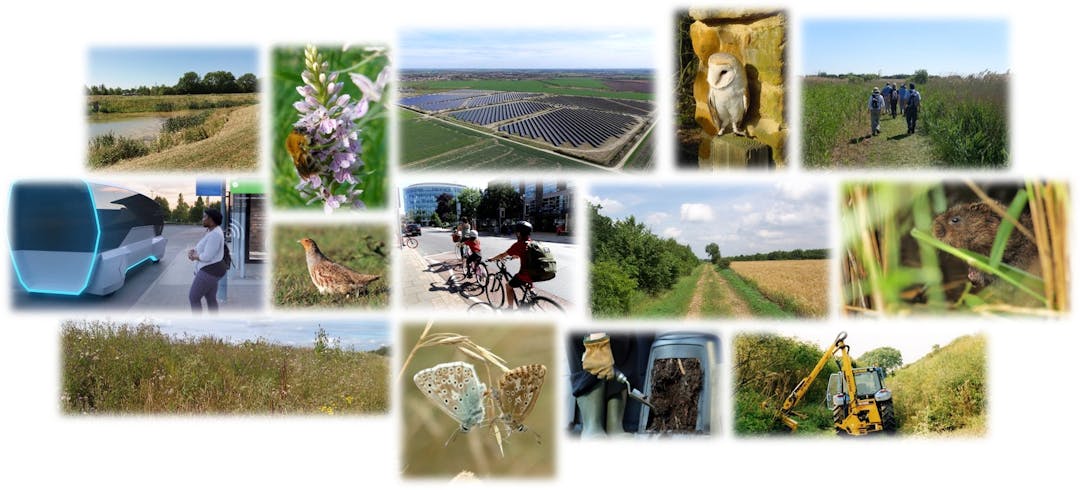Climate Change and Environment Strategy Consultation
Consultation has concluded

Climate Change is the greatest environmental challenge of our time and of any time before. Driven by human activities, our climate is changing at an unprecedented pace and scale that threatens all life on Earth. There is an urgent need for stronger and more integrated action.
 Councillor Count, Leader of the Council, put forward a motion to develop a Climate and Environment Strategy in May 2019. This was agreed by Full Council and sets Cambridgeshire County Council on a pathway to securing a sustainable future for our County and its residents.
Councillor Count, Leader of the Council, put forward a motion to develop a Climate and Environment Strategy in May 2019. This was agreed by Full Council and sets Cambridgeshire County Council on a pathway to securing a sustainable future for our County and its residents.
As part of this declaration the Council is developing a Climate Change and Environment Strategy and Action Plan. The Strategy outlines how we will: reduce the carbon footprint of the Council and the County; help our communities adapt to the change already happening; and enhance nature and the benefits it provides.
In developing the Strategy the County Council is keen to understand what our partners and communities think of the priorities and targets we have set ourselves and how you can work with us to bring forward some of the changes that are needed to the way we live and work. We would like to invite you to review the draft Strategy and provide feedback.
The consultation will run from 20 December 2019 to 31 January 2020.
Keep scrolling to take part in the survey
Our vision is to deliver net zero carbon emissions for Cambridgeshire by 2050 in partnership with all stakeholders, whilst supporting our communities and Cambridgeshire’s biodiversity and environmental assets to adapt and flourish as our climate changes.

The purpose of this strategy is to provide a clear statement of the Council’s climate change and environmental objectives and to set out how the Council will meet environmental sustainability and climate change challenges. The Strategy is for Cambridgeshire County Council and focuses primarily on what the Council itself can achieve. However, tackling climate change, adapting to its ongoing impacts and protecting and enhancing our natural capital is bigger than any one organisation. So the Strategy also identifies how we must work with public and private sector partners and communities across the county to support the transformation needed to tackle these challenges together.
This Strategy has been developed around the three key themes of:

Our priority areas for the climate change mitigation theme (reducing our carbon footprint) are:
- Nearly zero energy buildings – improving energy efficiency and installing low carbon heating.
- Transport – prioritising walking, cycling and public transport, and supporting the uptake of electric vehicles.
- Waste management strategies to reduce carbon, and
- Afforestation – planting trees.
Our priority areas for the climate change adaptation theme are:
- Effective plans and climate change risk management strategies across all services;
- Resilience of our own buildings and staff;
- Our work in flood risk management, and
- Supporting vulnerable people in severe weather or temperatures.
Our priority areas for the natural capital theme are:
- Restoring and/or creating natural habitats;
- Planning policy to reflect strategic and local objectives for countryside enhancement and green infrastructure;
- Supporting heritage assets, and
- More tree planting and continued environmental stewardship as part of rural estate management.
We have also identified further priority areas for collaboration with partners and our communities for all three key themes. Seven provisional targets have been identified in the Action Plan.
The Strategy documents are available to download and read on the right.

